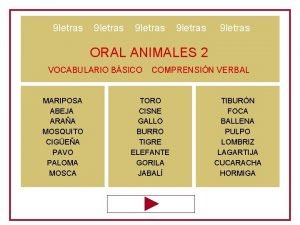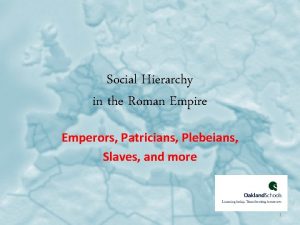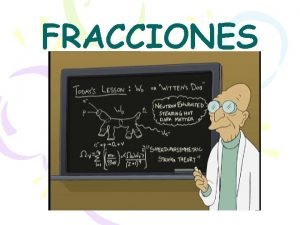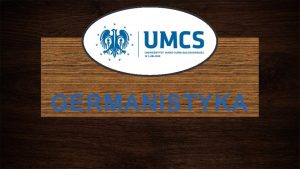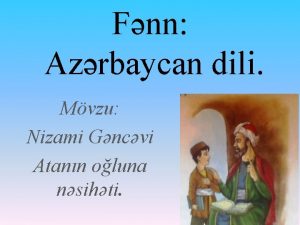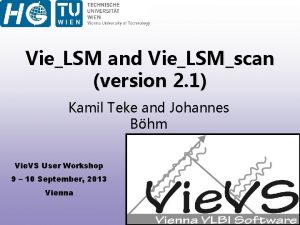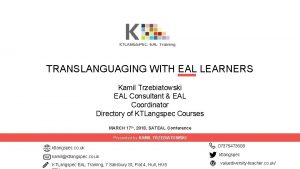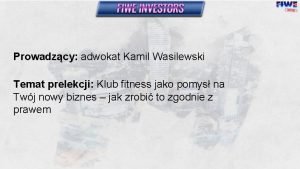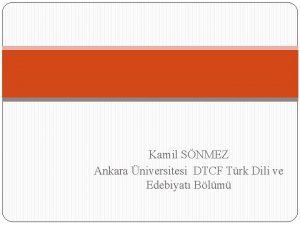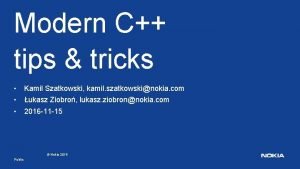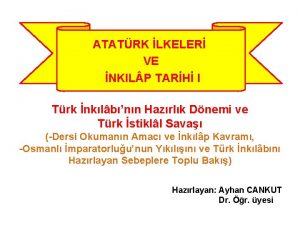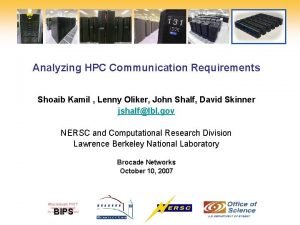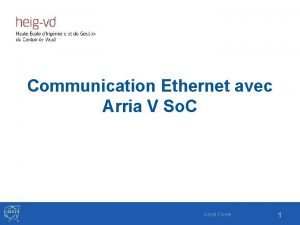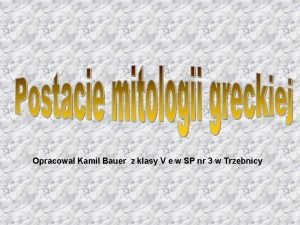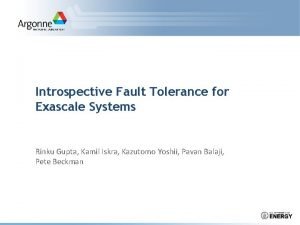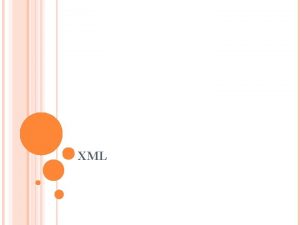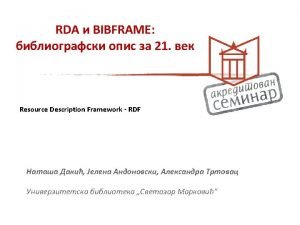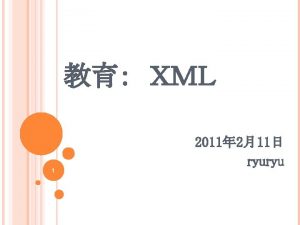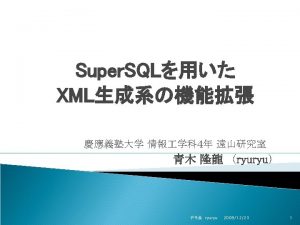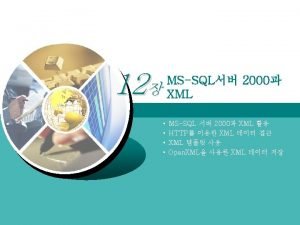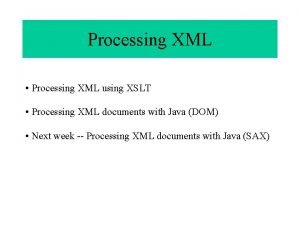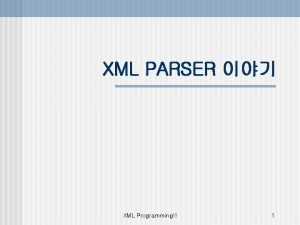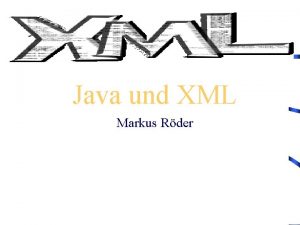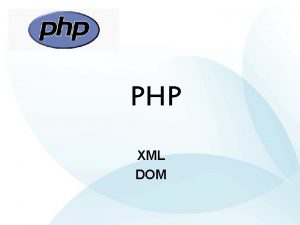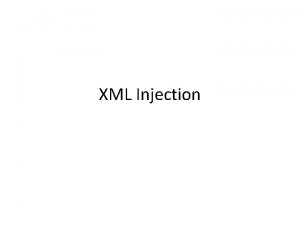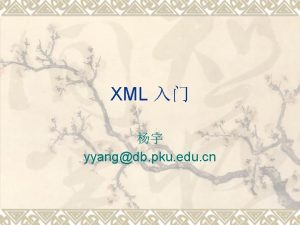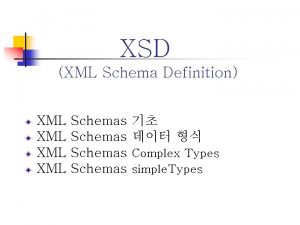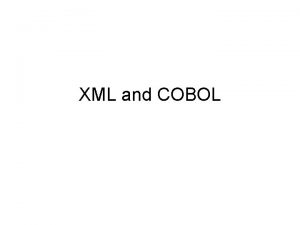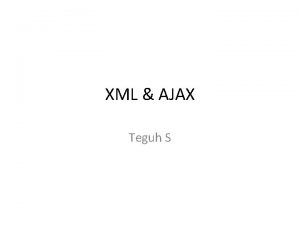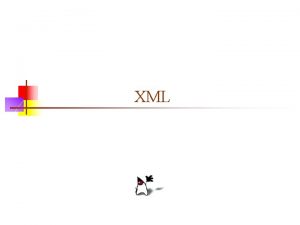Statistics on The Real XML Data Kamil Toman
































- Slides: 32

Statistics on The Real XML Data Kamil Toman kamil. toman@mff. cuni. cz Department of Software Engineering Faculty of Mathematics and Physics Charles University

Introduction XML and related technologies - a leading role among standards for data representation Semistructured, selfdescriptive Possibility to express the allowed structures DTD, XML Schema, Relax NG, . . . Different techniques are needed for managing processing querying updating compressing versioning. . . 2

General Processing Techniques “As general as possible” correct at first glance unnecessarily complex often inefficient With restricted features more down-to-earth more effective restrictions are often “unnatural” (based on particular technique) effectiveness suffers when data do not correspond to expectations 3

DTD Analysis DTDs still dominates among XML schemas Most shortcomings have been overcome in XML Schema missing operator for unordered sequences inheritance and modularity types ID <-> IDREF Only the simplest features are used Very often incorrect (both syntactically and semantically)

DTD Content Models Depth less than 6 ID/IDREF used infrequently Unreachable elements are either root elements or useless root element is stated clearly General recursivity is used in 58% of all DTDs Short simple paths (< 8) Cycles are common both small (<100) large (>500) Short chain of stars (mode 3) Significant number of hubs (elements with large fan-in)

DTD vs. XML Schema What extra features of XML Schema not found in DTDs are used in practice? namespaces (22%) extension (27%) and restriction (73%) of simple types extension (37%) and restriction (7%) of complex types final (7%), abstract (12%) and block(2%) attribute of complex type definitions unique (7%), key/keyref (4%) features unordered sequences (4%) redefinitions of types and groups (~0%) 85% of XSDs define local tree languages (languages that can be defined by DTDs as well) XSD non-determinism not allowed but frequent

Web XML Document Analysis

Web XML Document Analysis

Web XML Document Analysis

Web XML Document Analysis Web XML document characteristics document size varies from 10 B to 4. 6 k. B for documents up to 4 k. B the number of element nodes is about 50%, the number of attributes about 30% for larger documents the number of elements decreases (~38%) while the number of attributes increases (~50%) 18% of elements have no attributes mixed content found in 72% of documents (5% of contents) 99% of documents shallow (depth < 8) average depth 4 only 260 total different recursive elements found in 98% of recursive documents there is only one recursive element 95% of recursive documents do not refer DTD or XSD

Real XML Documents Classification data-centric documents (dat) database exports, IMDb, list of employees, . . . document-centric documents (doc) Shakespeare's plays, XHTML documents, novels, docbook, . . . data exchange documents (ex) medical information, exchange formats, . . . reports (rep) overviews or summaries research documents (res) docs with special structures, DNA/RNA, NASA findings, . . . semantic web documents (sem) RDF, OWL, DAML, . . .

Real XML Documents

Real XML Documents

Real XML Documents

Real XML Documents

Real XML Documents

Real XML Documents

Real XML Documents 7

Real XML Documents

Real XML Documents New constructs trivial element – content model a : = e | pcdata simple element – consists only of trivial elements complex elements – otherwise Recursivity trivial - “selfrecursive”, no branching <a><a><a>. . . </a></a> linear – similar to trivial but can intermix with regular elements, single recursive element <a><b><a>. . . </a></b><c/></a> pure – single recursive element, branching possible <a><b/><a>. . . </a><c/><a>. . . </a><d/></a> general – more than one recursive element

Real XML Documents

Real XML Documents Shallow Relational Patterns <a> <b>one</b> <b>two</b> <b>three</b> </a> <!-- trivial elements --> Relational Patterns <x> <a>xxx</a> <b>yyy</b> <c>zzz</c> </x> <a>111</a> <c>333</c> </x> <!-- trivial elements --> <!-- no repetition --> <!-- trivial elements --> <!-- missing elements allowed -->

Real XML Documents

Real XML Documents Mixed elements <text><par> Some semistructured text including special formatting <table><tr><td></td>. . . </tr>. . . </table> and other complex stuff </par><par>. . . </text> Simple mixed elements <text>Hello <b>bold</b> world!</text>

Real XML Documents - Conclusions Amount of tagging dominates size of document XML Documents are shallow 95% of documents has < 13 max depth, average is about 5 Highest amounts of elements, attributes, text nodes and mixed contents are at first levels rapid decrease in higher levels (depths) Data are regular data-centric documents can often even described by (fairly simple) relational or shallow relational patterns document-centric XML data also contain significant number of patterns Most documents use some kind of standard schema

Real XML Documents - Conclusions Recursion occurs quite often (doc ~ 43%, ex ~ 64%) the number of recursive elements is low, though it is simple, depth, branching and ed-pair distance is always less than 10 the most common type of recursion is linear and pure recursion schemes specify the most general type of recursion Mixed contents relatively high usage in document/exchange low usage in data-centric documents mostly simple mixed contents depth is on average less than 10

XML Repositories Native use some kind of numbering schema the size of indexes is the key problem the length of dynamic identifiers vary usually the structural identifiers are to be changed on certain updates (O)RDBMS leverage existing technology schema driven vs. generic methods inefficiencies due to large number of joins XPath/XQuery <-> SQL transformation problems Other: ODBMS, Object managers, filesystem, . . . unsuitable for general querying

Hybrid XML Repository No existing general technique effective for any input data using general method only if necessary Identification of data patterns frequent parts to be processed specifically preserving updatability XML Schema exploitation Numbering schema integration

XML Fragments Features of Patterns Frequent usage in real XML documents Apparent meaning/purpose Existence of effective processing method Apparent typical updates and their possible Effective processing Easy recognition Fragment categorization known and static (path summary schema) known and finite (path summary schema) mapped to relations (bubble node) mapped to XML-aware text (buble node) unknown or possibly infinite (ORDPATHs like schema)

Adaptability Continuous changes should not affect efficiency adversely Invocation fragment insertion document insertion query processing automatically maintained background process Open issues: similarity function query adaptation transactions

Conclusion Hybrid Repository a. b. c. d. e. effective pattern recognition possible specific approach for simple fragments seamless numbering schema integration preserving updatability avoids 2+ level object identification leverages existing techniques for querying needs fragment similarity function index building more complex dynamic identifiers of variable length transaction model programming complexity

Thank you See full text version for references.
 Kamil toman
Kamil toman Animales que tengan 9 letras en su nombre
Animales que tengan 9 letras en su nombre Social hierarchy rome
Social hierarchy rome Partes en que se divide el entero
Partes en que se divide el entero Ejemplos de problemas no estructurados
Ejemplos de problemas no estructurados Romance 7
Romance 7 Introduction to statistics what is statistics
Introduction to statistics what is statistics Izharı şefevi
Izharı şefevi Kamil sznajder
Kamil sznajder Germanistyka umcs
Germanistyka umcs Nizami gencevi atanın oğluna nəsihəti
Nizami gencevi atanın oğluna nəsihəti Ssm wisła płock plan treningowy
Ssm wisła płock plan treningowy Wan abdul rahim kamil
Wan abdul rahim kamil Kamil teke
Kamil teke Translanguaging for dummies
Translanguaging for dummies Kamil wasilewski internet
Kamil wasilewski internet Hyperechogénny
Hyperechogénny Kamil sönmez ankara üniversitesi
Kamil sönmez ankara üniversitesi Pieseň horehronie
Pieseň horehronie Kronospan foundation
Kronospan foundation Kamil nejezchleb
Kamil nejezchleb Prof dr kamil adalet
Prof dr kamil adalet Kamil szatkowski
Kamil szatkowski Arapça kamil olma olgunlaşma
Arapça kamil olma olgunlaşma Tamirul millat mohila kamil madrasah
Tamirul millat mohila kamil madrasah Shoaib kamil
Shoaib kamil Kamil valica
Kamil valica Kamil florek
Kamil florek Kamil kucera wikipedia
Kamil kucera wikipedia Julianna kieraś
Julianna kieraś Bog wiatru zachodniego
Bog wiatru zachodniego Kamil gupta
Kamil gupta Kamil krysztofiak
Kamil krysztofiak

